Platform
Solutions
Industries
Compare
Resources
Posted by on July 3, 2023 — Updated on November 14, 2023
Developing the skills to train clients for a 5K can open up a new realm for your personal training business. However, it’s crucial to have the right knowledge and tools to effectively assist these clients. Specific features of personal training software can be invaluable in this endeavor. Discover how to guide clients training for a 5K and the all the top personal training tools you’ll need in this comprehensive guide.
Helping clients prepare for a 5K can provide personal trainers a rewarding opportunity to significantly enhance their clients’ fitness journeys.
To help clients training for a 5K effectively, you need not only an understanding of endurance training but also the right tools to monitor progress and adjust training plans; that’s where the best online personal training software platform steps in. By taking advantage of the features that top-quality online personal training software has to offer, you can guide clients in their 5K training in a way that maximizes their performance and minimizes injury risk.


To get the best personal training software from Exercise.com, book a demo now!
Training for a 5K race can be an exciting and rewarding experience for both novice and experienced runners. As a fitness professional, it’s important to provide your clients with the support and guidance they need to succeed in their training journey. In this article, we will explore the various aspects of helping clients train for a 5K race, from setting realistic goals to incorporating strength training and monitoring progress. So, lace up your running shoes and let’s dive in!
Before delving into the specifics of training, it’s important to highlight the numerous benefits that come with preparing for a 5K race. Not only does running help improve cardiovascular health and strengthen muscles, but it also allows for stress-relief and boosts mood through the release of endorphins. Training for a 5K race can also serve as a great motivation for your clients to adopt a healthier lifestyle and embrace the joy of running.
In addition to the physical and mental benefits, training for a 5K race can also provide a sense of accomplishment and a goal to work towards. Setting a target race and following a training plan can give individuals a sense of purpose and structure in their fitness journey. It can also foster a sense of community and camaraderie, as many 5K races often attract participants from all walks of life, creating a supportive and encouraging environment.
Read More:
When working with clients who are training for a 5K race, it’s crucial to help them set achievable and realistic goals. This involves taking into consideration their current fitness level, previous running experience, and any potential time constraints. Encourage your clients to set goals that are specific, measurable, attainable, relevant, and time-bound (SMART goals). By breaking down their overall objective into smaller milestones, such as increasing their running distance or improving their pace, your clients will be better able to track their progress and stay motivated throughout their training journey.
Additionally, it’s important to remind your clients to listen to their bodies and prioritize rest and recovery. Pushing too hard without allowing for adequate rest can lead to overtraining and potential injuries. Encourage your clients to incorporate rest days into their training schedule and to pay attention to any signs of fatigue or pain. By balancing their training with proper rest and recovery, your clients will be able to optimize their performance and reduce the risk of burnout.
Creating a well-structured and personalized training plan is key to ensuring your clients make steady progress and avoid common running injuries. Start by determining the duration of their training program. Typically, an 8 to 12-week plan works well for beginners, while more experienced runners might need a shorter timeframe. Next, divide the program into phases, focusing on gradually building stamina, endurance, and speed. Incorporate a mix of easy runs, interval training, tempo runs, and long runs to provide variety and challenge. Don’t forget to include rest days to allow for adequate recovery.
Additionally, it is important to consider the individual goals and abilities of your clients when designing their training plan. Some clients may be training for a specific race or event, while others may simply want to improve their overall fitness. Tailoring the plan to their specific needs will help keep them motivated and engaged throughout the training process.
Before each training session, emphasize the significance of warming up to prepare the body for the upcoming run. Dynamic stretches, such as leg swings and walking lunges, can help loosen up muscles and increase blood flow. After the run, encourage your clients to engage in a cool-down routine that includes static stretches to improve flexibility and reduce post-workout muscle soreness. By incorporating warm-up and cool-down exercises into their training regimen, your clients can minimize the risk of injury and optimize their performance.
During the warm-up phase, it is important to gradually increase the intensity of the exercises to raise the heart rate and body temperature. This can be achieved through activities such as jogging or brisk walking. Additionally, incorporating mobility exercises, such as arm circles and hip rotations, can help improve joint range of motion and prepare the body for the specific movements involved in running.
In the cool-down phase, encourage your clients to perform gentle exercises that promote relaxation and recovery. This can include activities such as walking or light jogging, followed by static stretches targeting major muscle groups. Static stretches should be held for 15-30 seconds without bouncing, allowing the muscles to lengthen and relax. This can help prevent muscle tightness and promote better recovery.
While running is the key focus of 5K training, don’t overlook the importance of strength training. Incorporating exercises that target major muscle groups, such as squats, lunges, and planks, can help improve overall running efficiency, prevent muscle imbalances, and reduce the risk of injuries. Aim for two to three strength training sessions per week, focusing on exercises that target the lower body, core, and upper body. Additionally, encourage your clients to include exercises that enhance balance and stability, such as single-leg exercises or yoga poses, to further enhance their running performance.
One important aspect of strength training for 5K training is to gradually increase the intensity and resistance of the exercises over time. This progressive overload helps to continually challenge the muscles and promote strength gains. Encourage your clients to start with lighter weights or bodyweight exercises and gradually increase the load as they become stronger and more comfortable with the movements.
Another key consideration is to ensure proper form and technique during strength training exercises. Emphasize the importance of maintaining proper alignment, engaging the correct muscles, and avoiding any jerky or uncontrolled movements. This will not only maximize the effectiveness of the exercises but also reduce the risk of injuries.
Proper nutrition plays a vital role in fueling your clients’ 5K training. Encourage them to consume a well-balanced diet that includes lean proteins, whole grains, fruits, vegetables, and healthy fats. Emphasize the importance of staying hydrated, both during training sessions and throughout the day. Advise your clients to consume a pre-workout snack that combines carbohydrates and a small amount of protein to provide sustained energy. Post-run, encourage them to refuel their muscles with a combination of carbohydrates and protein within 30 minutes to aid in muscle recovery and repair.
In addition to a well-balanced diet, it is important for your clients to pay attention to their calorie intake. While training for a 5K, their bodies will require more energy, so they may need to increase their calorie consumption slightly to support their training. However, it is important to remind them to focus on nutrient-dense foods rather than empty calories. Encourage them to choose whole, unprocessed foods whenever possible and to limit their intake of sugary snacks and beverages.
As a fitness professional, it’s crucial to educate your clients on injury prevention strategies during their 5K training. Encourage them to listen to their bodies and pay attention to any signs of discomfort or pain. Emphasize the importance of proper running form, including maintaining an upright posture and landing mid-foot to reduce impact on joints. Encourage the use of appropriate running shoes that provide adequate support and cushioning. Remind your clients to gradually increase their mileage and intensity to prevent overuse injuries. Finally, advise them to incorporate strength training exercises that target the muscles used in running to maintain balance and stability.
Helping your clients select the right gear for their 5K races can significantly enhance their overall experience. Encourage them to invest in a good pair of running shoes that provide proper support and cushioning. Suggest clothing made from breathable and moisture-wicking fabrics to keep them comfortable during the race. If appropriate, guide them on utilizing accessories such as a running watch or fitness tracker to monitor their pace and distance. By choosing the right gear, your clients can feel confident and prepared on race day.
Running a 5K race involves not only physical fitness but also mental strength. Help your clients develop mental preparation techniques that can boost their performance and overcome challenges during the race. Encourage them to practice positive self-talk and visualization exercises to build confidence and focus. Remind them to break down the race into smaller sections and set goals, such as reaching specific landmarks or maintaining a steady pace. Additionally, teach them deep breathing techniques and mindfulness exercises to manage pre-race jitters and stay present during the race.
To ensure your clients stay motivated and assess their progress, it’s essential to help them track their performance throughout their 5K training. Encourage them to keep a running log, noting the distance, time, and any perceived effort or discomfort felt during each run. Recommend utilizing a fitness app or GPS watch to track their pace, distance, and heart rate. Additionally, consider conducting regular fitness assessments, such as a timed 5K run or a VO2 max test, to provide tangible data on improvements and identify areas for further development.
While running is the primary focus of 5K training, incorporating cross-training activities can provide additional benefits and help prevent burnout. Encourage your clients to try low-impact activities such as cycling, swimming, or rowing to give their joints a rest while still maintaining cardiovascular fitness. Yoga or Pilates can help improve flexibility, core strength, and stability. Strength training exercises, such as kettlebell swings or medicine ball exercises, can further enhance overall running performance. By incorporating cross-training activities, your clients can enhance their overall fitness and reduce the risk of overuse injuries.
Maintaining motivation throughout a 5K training program can sometimes be challenging. As a fitness professional, it’s crucial to provide your clients with the support and motivation they need to stay on track. Celebrate their small victories, such as completing longer runs or achieving personal bests. Organize group runs or virtual races to foster a sense of community and camaraderie. Consider creating a reward system, where clients can earn points or incentives for accomplishing specific milestones. Remind your clients of why they started their training journey and help them visualize the sense of accomplishment they will feel crossing the finish line on race day.
In the weeks leading up to the 5K race, it’s important to guide your clients through a tapering phase to allow the body to fully recover and optimize performance. Gradually reduce the overall mileage and intensity in the final weeks leading up to the race. Encourage your clients to focus on rest, recovery, and engaging in light activities such as stretching or leisurely walks. Emphasize the importance of getting adequate sleep and maintaining a nutritious diet during this period. By tapering properly, your clients will arrive at the starting line feeling refreshed, rejuvenated, and ready to give their best effort.
Rest and recovery are integral components of any successful training program, including 5K training. Educate your clients on the importance of allowing the body time to rest and repair between training sessions. Encourage them to incorporate active recovery activities such as foam rolling, gentle stretching, or yoga to enhance circulation and reduce muscle soreness. Remind them to prioritize sleep, as sufficient rest is crucial for muscle recovery and overall performance. By emphasizing the role of rest and recovery, your clients will be better equipped to avoid burnout, prevent injuries, and maintain consistent progress throughout their 5K training.
Training for a 5K race can be an incredibly gratifying experience, and as a fitness professional, you have the opportunity to guide and support your clients throughout their journey. By helping them set realistic goals, designing personalized training plans, and emphasizing proper nutrition and recovery, you can empower your clients to achieve their full potential and cross that finish line with confidence. So, lace up those running shoes, share your expertise, and enjoy the exhilarating process of helping clients training for a 5K!
Pacing is crucial when running a 5K, especially for beginners. Here are some tips for pacing a 5K:
Remember, pacing is individual and may vary depending on your fitness level and goals. Practice pacing during training runs to get a feel for your comfortable and sustainable race pace.
Running a 5K faster requires mental focus and determination. Here are some strategies to help you run a 5K faster mentally:
Remember, running faster is a gradual process. Consistent training, proper technique, and mental fortitude are all key components in improving your speed and performance.
Preparing for a 5K in just two weeks can be challenging, but it’s still possible to have a successful race. Here’s a plan to help you prepare in a limited timeframe:
Keep in mind that your training in this short timeframe will be more about building confidence and getting accustomed to the distance rather than focusing on significant performance improvements. Pace yourself during the race and listen to your body to avoid overexertion.
Encouragement and positive reinforcement can significantly impact a runner’s motivation and performance. Here are some phrases you can say to encourage a runner:
Tailor your words of encouragement to the specific situation and individual, and speak from a place of genuine support and positivity. Your words can make a significant difference in their mindset and motivation.
When preparing for a 5K race, there are a few things you should avoid to ensure a successful and enjoyable experience:
Remember, the 5K race is an opportunity to challenge yourself, have fun, and celebrate your accomplishments. By avoiding these common pitfalls, you can enhance your overall race experience and achieve your goals.
An amazing 5K time is subjective and can vary depending on individual fitness levels and goals. However, for competitive runners, finishing a 5K race in under 20 minutes is generally considered an impressive time. For recreational runners or beginners, completing a 5K in under 30 minutes or reaching a personal best time can be a significant achievement. Remember that everyone’s journey and progress are unique, so focus on setting personal goals and celebrating your own accomplishments.
The average female time for a 5K can vary depending on factors such as age, fitness level, and experience. According to general race data, the average time for women to complete a 5K is around 30 to 35 minutes. However, it’s essential to note that these numbers are an approximation, and individual times can vary significantly. Whether you’re aiming for a personal best, looking to improve your endurance, or simply enjoying the experience, focus on your own progress and celebrate your achievements.
While it’s technically possible to complete a 5K without specific training, it’s generally recommended to engage in at least some level of training beforehand. Training helps improve your cardiovascular fitness, endurance, and running efficiency, reducing the risk of injury and enhancing your overall race experience. If you’re new to running or haven’t trained specifically for a 5K, consider starting with a beginner’s training program that gradually increases your running distance and incorporates rest days to allow for proper recovery.
Training for a 5K when you’re overweight should prioritize gradual progress and safety. Here are some tips:
Remember, the most important thing is to listen to your body, be patient with yourself, and celebrate every milestone achieved along the way. Consult with a healthcare professional or a certified running coach to receive personalized guidance and support for your specific needs and goals.
Training clients for a 5k requires a comprehensive and tailored approach. See how Exercise.com can help.


To learn more about how Exercise.com can help you run your fitness business, book a demo now!
Here’s how you can help your clients accomplish their goals by using workout plan creator software to create workout plans, run fitness challenges, offer online workout groups, message clients, and more, all from your very own custom branded fitness apps.
Exercise.com stands out as an all-in-one fitness business management software with comprehensive workout plan sales capabilities. The robust member management, billing & invoicing, and unique fitness assessment tools offer a one-stop solution for fitness business needs. Here’s just some of what you can do with the Exercise.com platform:
Engage with clients via automations.
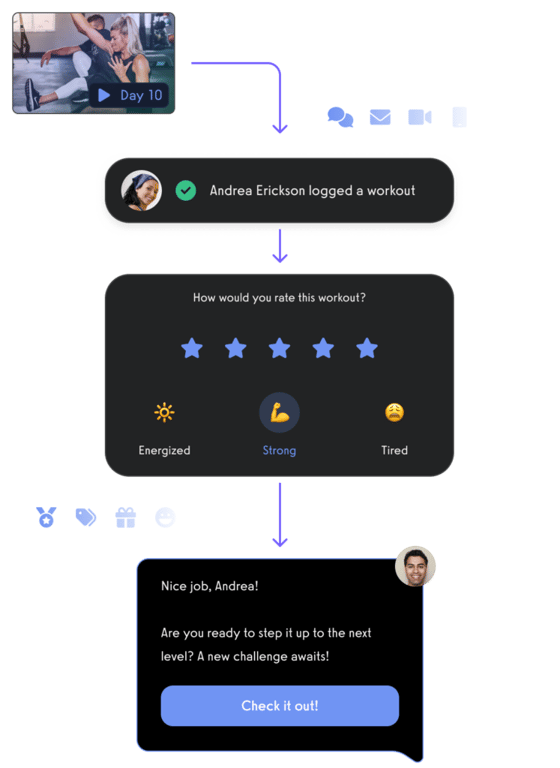
Manage leads with a fitness CRM. Read More: Best Fitness Club CRM Software
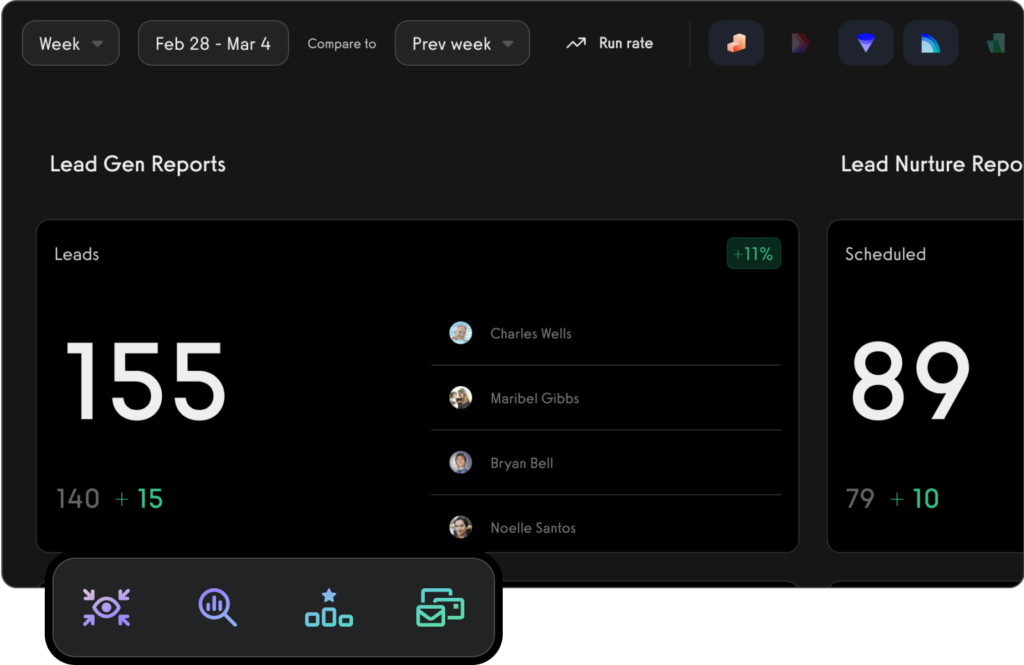
Create and send fitness assessments with ease.
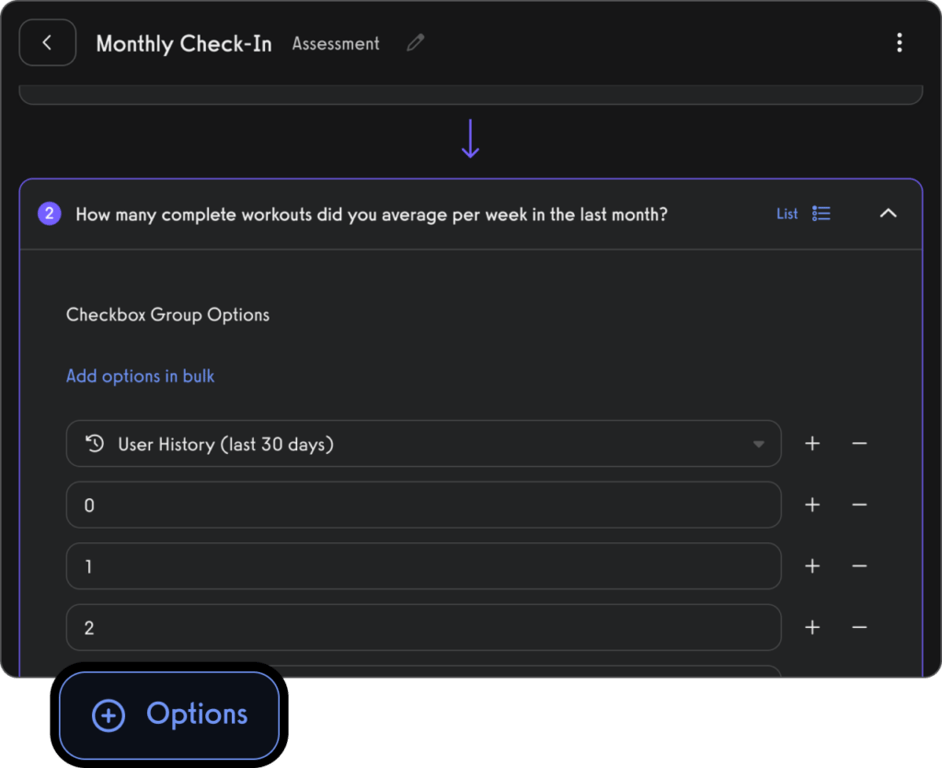
Use fitness habit tracking to inspire and motivate personal training clients (in-person and remote).

Use fitness progress photos to engage with clients.
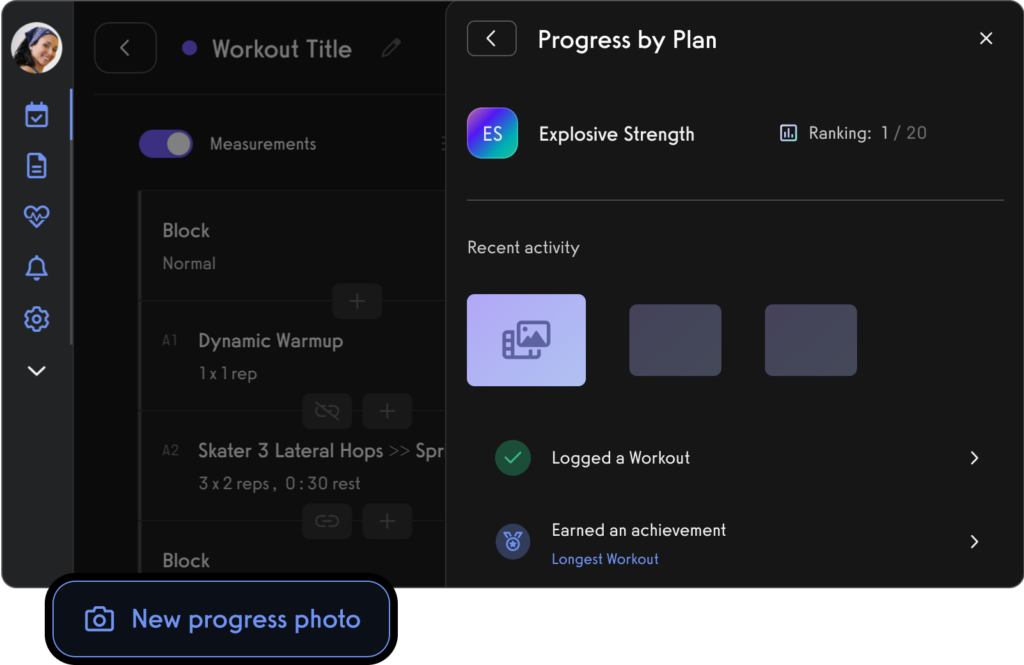
Use fitness leaderboards to track performance and inspire healthy competition.

Use the exercise demonstration video library or create your own custom exercise demonstration videos.
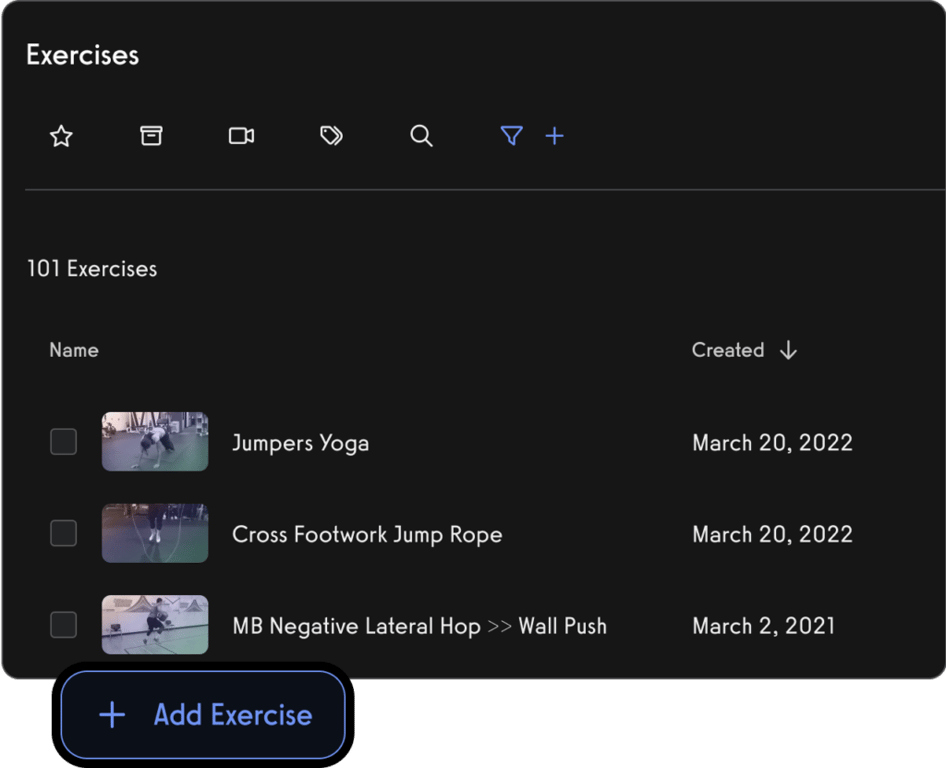
Create workout plans for parents and dependents, teams and more.
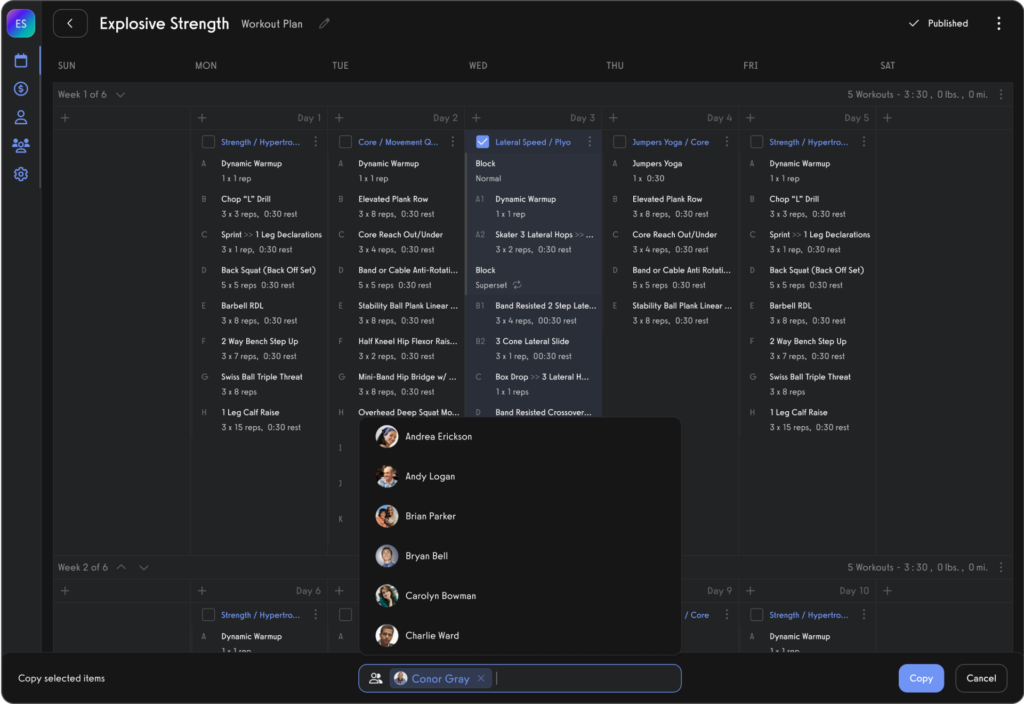
Manage personal training clients with ease.

Book appointments for clients (Read More: Best Gym Booking Software)

Create classes and fitness groups
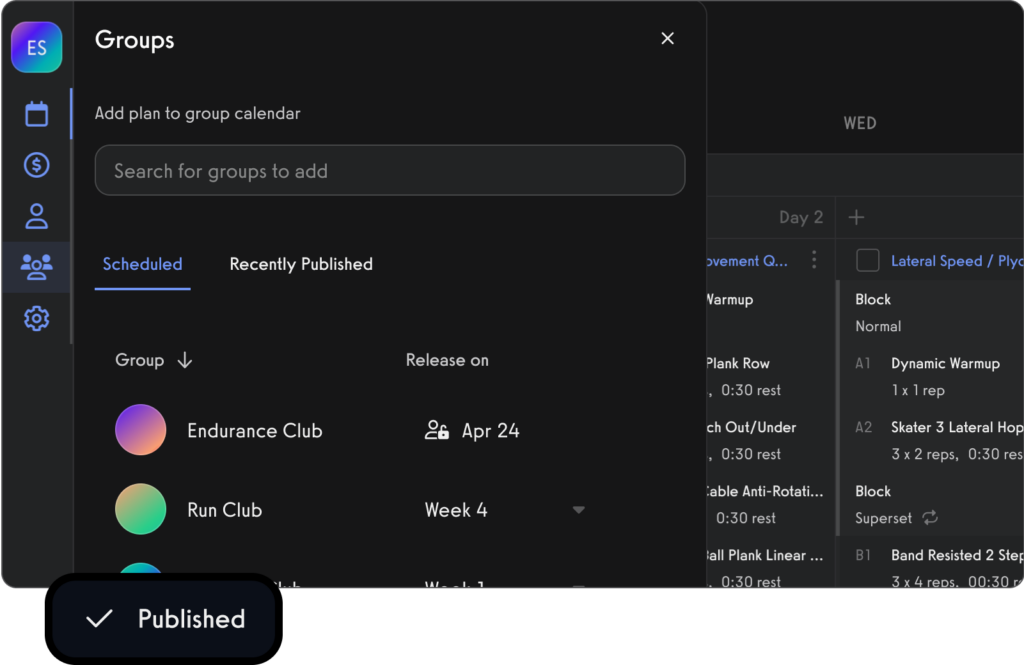
Manage fitness challenges (Read More: 100+ Fitness Challenge Ideas)
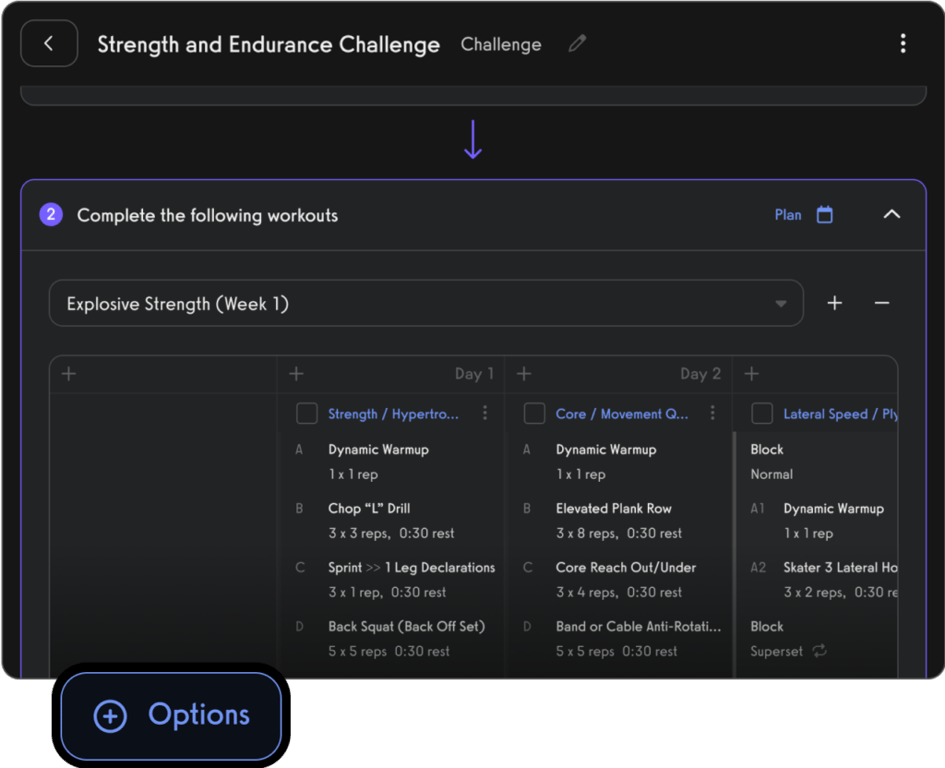
Process payments for open gym, classes, and personal training.

Communicate with gym members, athletes, team members, personal training clients, class members, parents, and dependents via SMS, email, and in-app push notification.
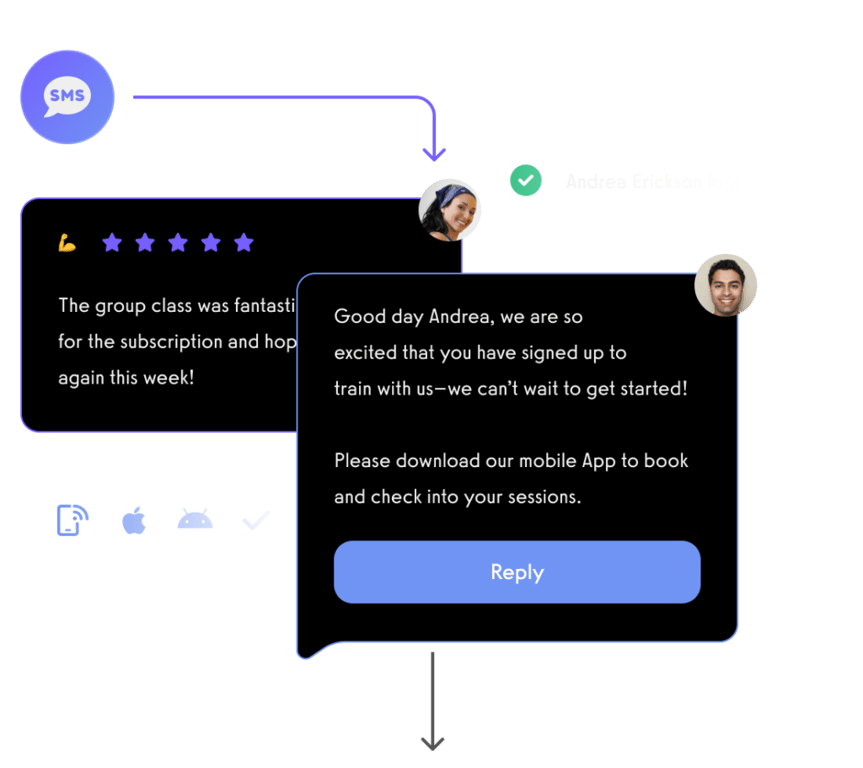
View performance over time, track personal records, and other fitness stats with performance reporting dashboards.
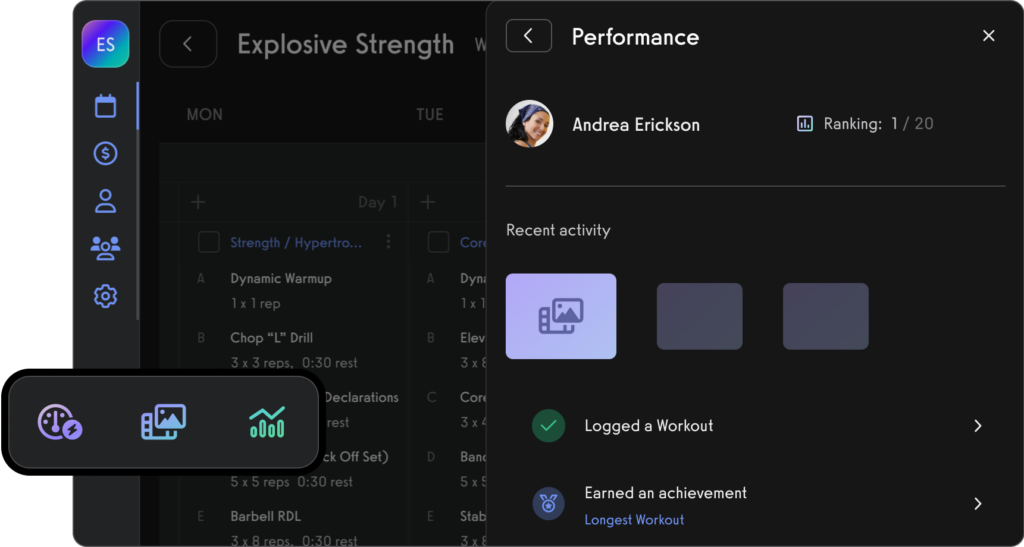
And of course, view all of your fitness business reports easily too.

All from your custom-branded fitness apps (Read More: Best Gym Mobile Fitness Apps Software)
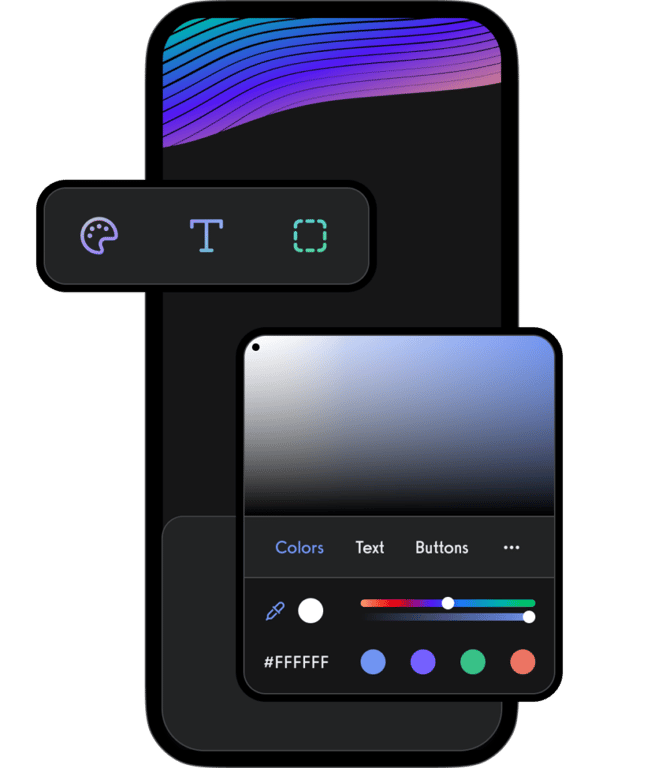


Want to learn how your fitness business can take it to the next level? Get a demo now!
 Tyler Spraul
Tyler Spraul